One setting’s focus on the importance of the key person became even more valuable during lockdown, report Wendy Baker and Sally Cave
At Guildford Nursery School and Family Centre, Surrey, we have always recognised the invaluable role played by the key person in nurturing young children. Lockdown has amplified that importance and provided us with pointers on how to develop the role in the future.
Our practice and pedagogy are influenced by the principles of Friedrich Froebel. He believed that parents need to feel empowered and that parents and children need to feel a sense of belonging, a connection with their community.
Froebel also thought that every nursery and school should be in a ‘close and living relationship with people’s lives’. (Tovey, 2020)
Close relationships, and attachment, are critical to well-being and affect not only the child, but the family too. John Bowlby described how a secure base is provided through a relationship with one or more sensitive and responsive attachment figures. These figures meet the child’s needs and provide a safe haven for the child when they are upset or anxious. (Bowlby, 1988)
We believe that it is the key person’s responsibility to build and sustain positive relationships with each child and their family, and we use a poster to explain our key person approach and the importance we attach to it (see box for text).
It is a role that comes with its challenges, so we provide ‘in-house’ support for key people – for example, every key person has a buddy key person; we all engage in regular peer coaching; they can turn to staff who are trained mental health first-aiders; and on occasion we have called upon outside professionals, such as a clinical psychologist, for help.
DURING LOCKDOWN
So much of the key person approach has historically relied upon physically seeing both the child and their family regularly to build and sustain those positive relationships. That came to an abrupt end for most children and their families in March when we all went into lockdown.
Like many schools and settings, our key people immediately began to contact families, initially via email and telephone, in order to maintain the sense of connection and belonging.
They asked about families’ well-being and kept channels of communication open throughout lockdown. They checked that families had enough to eat and offered alternatives if required – for example, free meals delivered by a service run by local volunteers.
Families were keen to talk about managing their child’s behaviour and ideas of what do at a time when many were housebound. Key people stepped up to offer ideas for teaching and learning at home via our Facebook page and website.
Zoom time
This then developed into doing Zoom ‘group times’ twice a week, so that the children could see and interact with their key person, sharing stories, playing games and setting challenges.
One girl attended all 12 Zoom sessions offered in April and May, quietly observing at first but gaining in confidence after each session. Her mum also kept in regular contact via email, feeding back what they were doing at home, often replicating games we had been doing over Zoom.
Another boy was so excited anticipating his upcoming Zoom ‘meeting’ that he used his mum’s jewellery box as a laptop and pretended to speak to his key person on it.
The key person exchanged more than 30 emails with his mum, and often followed these up with a phone call to discuss worries about his moving onto school and missing out on some of his nursery experience – a very common theme among families.
A few families were happier to communicate via text, particularly if they weren’t confident at sending emails or speaking over the phone.
One parent wanted advice about a birthday present for her son, describing a book that her child had been talking about but unsure what it was actually called. The key person knew straight away the book he was referring to.
End-of-nursery reports
While in lockdown, key people developed their end-of-nursery reports. In line with our learning stories, these focus on how, as well as what, children have been learning and comment on challenges in a positive way. They are written to the child as they are the main ‘audience’. For example:
Child A
‘Sometimes you need help to do what an adult asks you to do and you get very cross. There are times when I think you just want to be quiet. You do like to have a familiar adult near when you feel like this and you respond very well when you are told that you are doing the right thing.’
Child B
‘When you are interested in something you will persist at it for a long time. You have lots of ideas that you try out. You spent ages lining up all the wheels in the garden and you commented on the ones that were really heavy.’
Reception teachers
The reports were welcomed by Reception teachers. One wrote:
‘[Your Learning Stories] are so reflective and give me a real sense of the whole child. It is easy to see what their interests and strengths are, whilst it also highlights areas to continue working on. We value the information, and I can imagine parents will keep this as a special memory of their time in nursery.’
All the younger children also received a letter from their key person, with examples shared on our website (see More information).
BACK TO NURSERY
As the lockdown relaxed and more children began to return to nursery, we wondered how the children would cope with being in a ‘bubble’, not necessarily with their key person. So, we created stories with photographs of what nursery would look like and the people they would be with (all known staff members).
There were some frantic phone calls from families, needing reassurance about whether their child should return and how they would manage with so many changes. Happily every child practically skipped into nursery.
Resilience
We wonder whether this resilience was a result of the positive relationships children and families had established with their key person and buddy key person; they knew they were being ‘held in mind’ by their trusted adults. We had 50 per cent of children return, well above the local and national averages.
In ‘Handle with care’ (Nursery World, 2008), Anne O’Connor talks of children having ‘several secondary attachments that a child needs to be able to thrive and cope’. This clearly came into play in a way we would never have foreseen.
One three-year-old on a child protection plan was with us throughout lockdown and continued to thrive despite not being with her key person. We believe the reasons were threefold:
- She has a very positive attachment to her key person, and will regularly tell staff that she is connected to her.
- The key person continued to connect with her family and the child even when they could not be together physically. This connection to the whole family became even more significant when the child was removed from her mother’s care and went to live with her father.
- Staff adopted children and families from other key groups, using the same skills as they had done with their original group.
IN THE FUTURE
The feedback during and since lockdown from both families and key people is that continuous and consistent contact was valued by all. This contact has varied dependent on parental choice: emails, text, phone calls, face-to-face (initially online and later outside as well).
Previously, we have perhaps over-relied on physical face-to-face contact. We have now learnt that this does not suit every parent. If parents trust us, then building and sustaining a positive relationship with their children is so much easier, hence the need to start with the family before the child, the whole before the part.
The children really benefited from actually seeing and interacting with their key person, so we will certainly be using Zoom sessions should lockdown be reimposed.
By the end of the summer term, key people had emailed new families, following up with a phone call to arrange visits for September.
We are discovering what means of contact works best for each of our new families. Instead of our usual home visits, we have planned visits for new and returning families in the nursery garden. Parents can still work with us to settle their children, but this will be done outside.
Further adaptations will take place, such as ‘Meet the key group’ (parents and key person meet over coffee) and individual parent/key person meetings that will happen virtually.
Now, as always, Froebelian principles guide us as we navigate the uncertain future. We all need to adapt while keeping true to our principles and pedagogy. Remembering that our key person approach is just that – an approach, not a system – means it can be adapted to suit every situation.
The key person approach at Guildford Nursery School
Every child is assigned a key person even before their first day in nursery. That person is always a qualified member of staff and will get to know the child and their family in order to offer support and guidance which is personal to each and every child. The key person is calm, warm and responsive and responds sensitively to each child’s needs, feelings, ideas and behaviour.
Why the key person is important to every child
- I know there is someone at nursery that knows and cares about me.
- I feel happy and safe and I’m ready to learn.
- I want to explore and investigate, knowing someone is there if things get tricky.
- I will try new things even if I’m not sure about them because I know it’s okay to make mistakes.
- I feel I belong in nursery and have people and things around me that I care about.
- I know there is someone at nursery who will greet me when I arrive and make me feel welcome and secure if something happens during my day that upsets me.
- I know I have someone who will comfort me and know how to make me feel better.
Why families think a key person approach is important
- ‘Leaving my child for the first time, I was comforted by the fact that I knew he had made a bond with you, and having that one key person was vital for him to settle at the start of each day.’
- ‘I spoke about you so much before he started that he knew that you were his go-to person and he struck a bond with you right away.’
- ‘I felt that you knew how to move him past being upset in the mornings quickly and he knew that if he had any problem that he could tell you.’
- ‘It kind of felt like at nursery, you were taking the place of me at home, and I knew he really valued that.’
- ‘The best part about having a key person is that someone knows your own child, and if you have any concerns or want to know how their day was we can go straight to them.’
- ‘As a parent it’s important to know your child is valued and taken care of as we would do so at home. For some parents this is the first time they are away from their child and communication is key.’
MORE INFORMATION
- Bowlby J (1988) A Secure Base: Parent-Child Attachment and Healthy Human Development. Basic Books
- Bruce T (2012) Early Childhood Practice: Froebel Today. Sage
- Anne O’Connor (2008) ‘Positive Relationships: Key people, part 1 – Handle with care’, Nursery World
- Tovey H (2020) Froebel’s principles and practice today. www.froebel.org.uk/pamphlets
- https://guildfordnscc.surrey.sch.uk/teaching-learning/home-learning
- Key person letter, https://guildfordnscc.surrey.sch.uk/wp-content/uploads/2020/ 07/Erin_letter.pdf
Wendy Baker is assistant head teacher and Sally Cave is head teacher at Guildford Nursery School and Family Centre




Just so heartened to hear how beautifully this vital and strong ‘ key person’ relationship has responded to being adaptated and developed as a result of COVID 19. Absolutely brilliant! More power to every key person’s elbow I say!